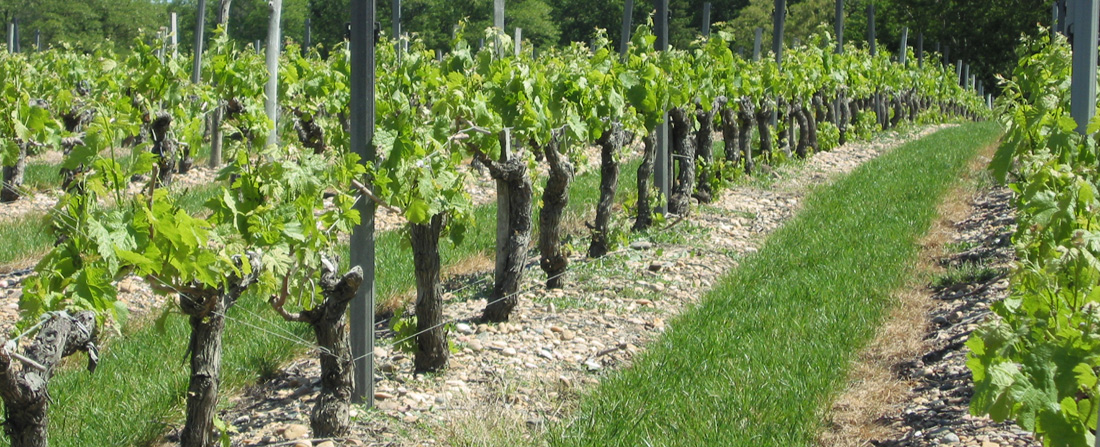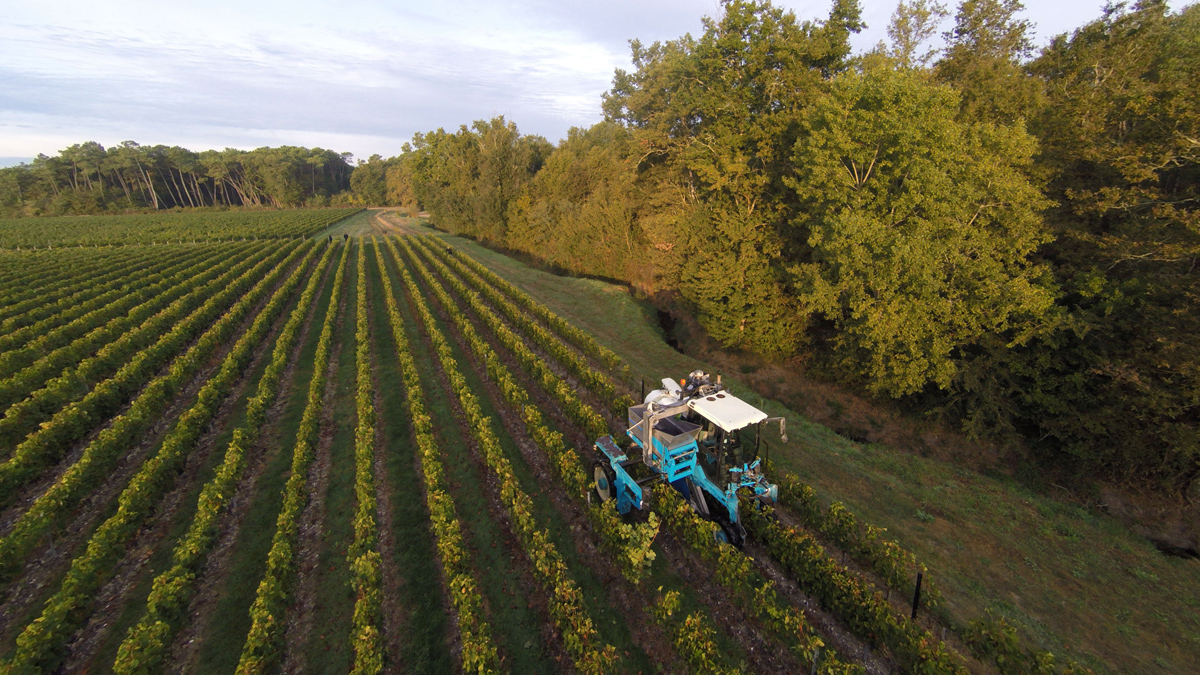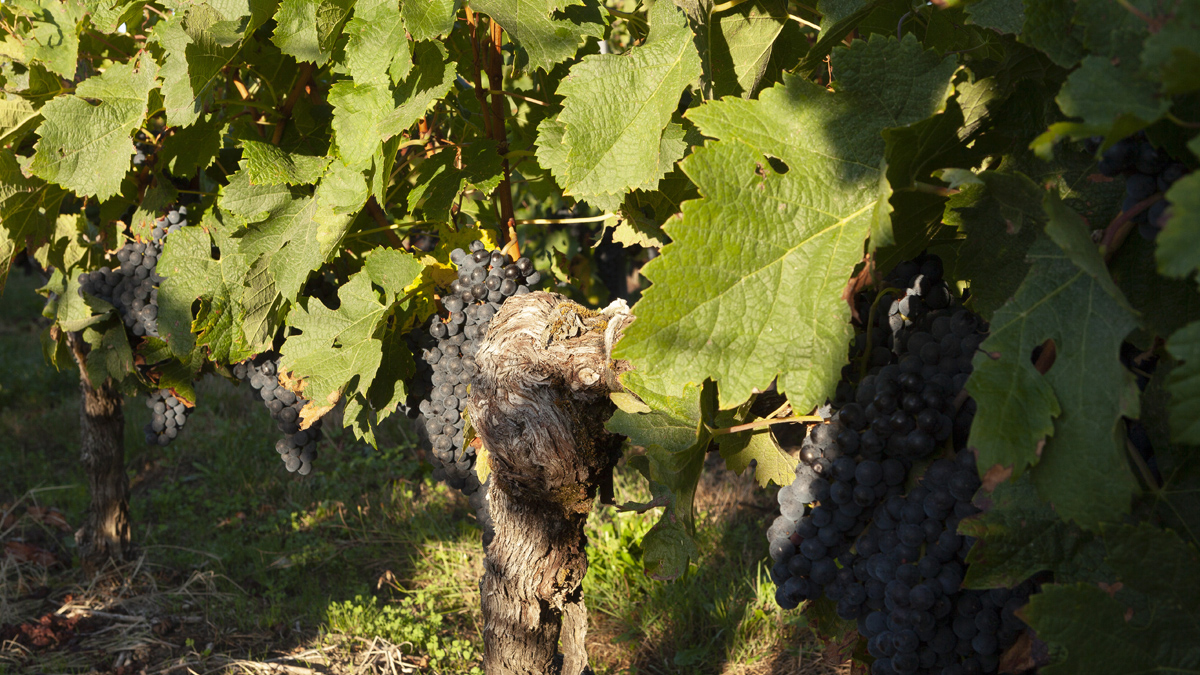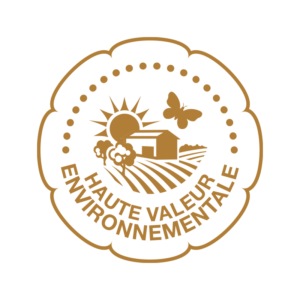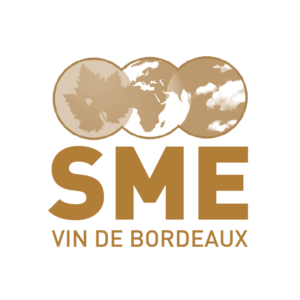land & people
Because we are only a short time in history, it behooves us to view the land as a treasure that we must build on before handing it on.
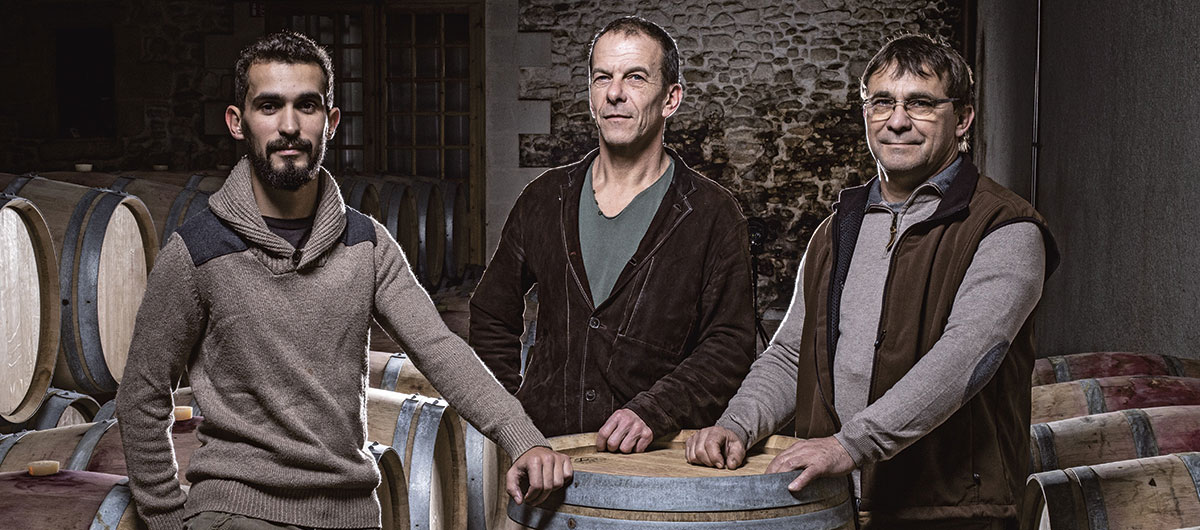
From the vintage of Biston to the Château Biston-Brillette
It was a Parisian who created the Biston-Brillette entity in 1835 and it was our parents who reconstituted it after a few twists and turns. At the time, the place called Brillette had become famous thanks to the creation of Château Brillette by the Dupérier de Larsan family, whose funeral ode signed by Malherbe, “Consolation to Dupérier”, was a bestseller at that time. In 1878 Château Biston-Brillette passed into the hands of Ulysse Daurat who faced the dreaded Crisis of Diseases. Powdery mildew and Phylloxera and its consequences.
When in 1936 the Lagarde family acquired Biston-Brillette, the property was divided, but they bought the titles of Château Biston-Brillette and Château Biston, as well as five hectares of vines linked to the history of the estate. Twenty-five years later, Christiane Lagarde married Michel Barbarin and here we are. In fact, our parents started from a handful of acres. Their vineyard will expand from 10 hectares in 1970 to 20 hectares in 2000, before passing it on to us.
Jean-Paul holds a BTA in oenology from the Faculty of Montpellier and joined them in 1985. And me, Serge, after professional experience in the industry, I gave in to the call of the vine and returned to the family fold in 1986.
During this period, rich in fine vintages, the cellars were modernized, the vinifications gained in precision and the wines of Château Biston-Brillette found their place in the catering industry and among the best wine merchants. At the same time, we have established a bond of loyalty with a clientele of amateurs in love with “author wines” and fond of direct contact with winegrowers who have a sense of hospitality. Direct selling is the core of our business and we have been pioneers in this area.
Today, we have integrated environmental concerns into our farming methods and increased the family estate to 26 hectares. This area allows us to continue working as a family. Guillaume, son of Jean-Paul, after a BTSA at the Lycée Viticole de Blanquefort joined the team in June 2017. The fourth generation of winegrowers is on the move.

land & people
Because we are only a short time in history, it behooves us to view the land as a treasure that we must build on before handing it on.

From the vintage of Biston to the Château Biston-Brillette
It was a Parisian who created the Biston-Brillette entity in 1835 and it was our parents who reconstituted it after a few twists and turns. At the time, the place called Brillette had become famous thanks to the creation of Château Brillette by the Dupérier de Larsan family, whose funeral ode signed by Malherbe, “Consolation to Dupérier”, was a bestseller at that time. . In 1878 Château Biston-Brillette passed into the hands of Ulysse Daurat who faced the dreaded Crisis of Diseases. Powdery mildew and Phylloxera and its consequences.
When in 1936 the Lagarde family acquired Biston-Brillette, the property was divided, but they bought the titles of Château Biston-Brillette and Château Biston, as well as five hectares of vines linked to the history of the estate. Twenty-five years later, Christiane Lagarde married Michel Barbarin and here we are. In fact, our parents started from a handful of acres. Their vineyard will expand from 10 hectares in 1970 to 20 hectares in 2000, before passing it on to us.
Jean-Paul holds a BTA in oenology from the Faculty of Montpellier and joined them in 1985. And me, Serge, after professional experience in the industry, I gave in to the call of the vine and returned to the family fold in 1986.
During this period, rich in fine vintages, the cellars were modernized, the vinifications gained in precision and the wines of Château Biston-Brillette found their place in the catering industry and among the best wine merchants. At the same time, we have established a bond of loyalty with a clientele of amateurs in love with “author wines” and fond of direct contact with winegrowers who have a sense of hospitality. Direct selling is the core of our business and we have been pioneers in this area.
Today, we have integrated environmental concerns into our farming methods and increased the family estate to 26 hectares. This area allows us to continue working as a family. Guillaume, son of Jean-Paul, after a BTSA at the Lycée Viticole de Blanquefort joined the team in June 2017. The fourth generation of winegrowers is on the move.

vine & men
We are not the ones who teach the vine, how to live. It is the vine that teaches us to live with it.

The Moulis appellation is defined by the deposits of Graves Garonnaises deposited in broad ridges perpendicular to the estuary. These deposits have varied with the bed of the river in its different states in the Quaternary. These gravel are therefore based on different subsoils and require a different approach and the plot planting of suitable grape varieties.
Two large fairly homogeneous sectors make up the property. The rump of Guitignan and that of the “Petit Poujeaux” which had remained a breeding ground. This detail is not trivial. At that time, the terroirs intended for breeding were living soils, naturally enriched. It is by playing on a range of soils between gravel and richer lands that we created the specific identity of Château Biston-Brillette. It is the establishment of this beautiful mosaic terroir that allows us to produce a wine faithful to our personalities. A signature wine.
If we study what the Médoc was planted with in the 19th century, we see that it was far from being a single-grape terroir! We therefore took into account various environmental elements in deciding to plant the appropriate grape varieties for the plots, estimated the planting densities, optimized the orientation of the rows, the choice of rootstocks and the grape varieties associated with them. It is the Cabernet Sauvignon-Merlot-Petit Verdot distribution in the places that go well that gives Château Biston Brillette its personality.

vine & men
We are not the ones who teach the vine, how to live. It is the vine that teaches us to live with it.

he Moulis appellation is defined by the deposits of Graves Garonnaises deposited in broad ridges perpendicular to the estuary. These deposits have varied with the bed of the river in its different states in the Quaternary. These gravel are therefore based on different subsoils and require a different approach and the plot planting of suitable grape varieties.
Two large fairly homogeneous sectors make up the property. The rump of Guitignan and that of the “Petit Poujeaux” which had remained a breeding ground. This detail is not trivial. At that time, the terroirs intended for breeding were living soils, naturally enriched. It is by playing on a range of soils between gravel and richer lands that we created the specific identity of Château Biston-Brillette. It is the establishment of this beautiful mosaic terroir that allows us to produce a wine faithful to our personalities. A signature wine.
If we study what the Médoc was planted with in the 19th century, we see that it was far from being a single-grape terroir! We therefore took into account various environmental elements in deciding to plant the appropriate grape varieties for the plots, estimated the planting densities, optimized the orientation of the rows, the choice of rootstocks and the grape varieties associated with them. It is the Cabernet Sauvignon-Merlot-Petit Verdot distribution in the places that go well that gives Château Biston Brillette its personality.

men & duties
We are the heirs of an ancestral know-how which for ten thousand years has crossed continents and people.
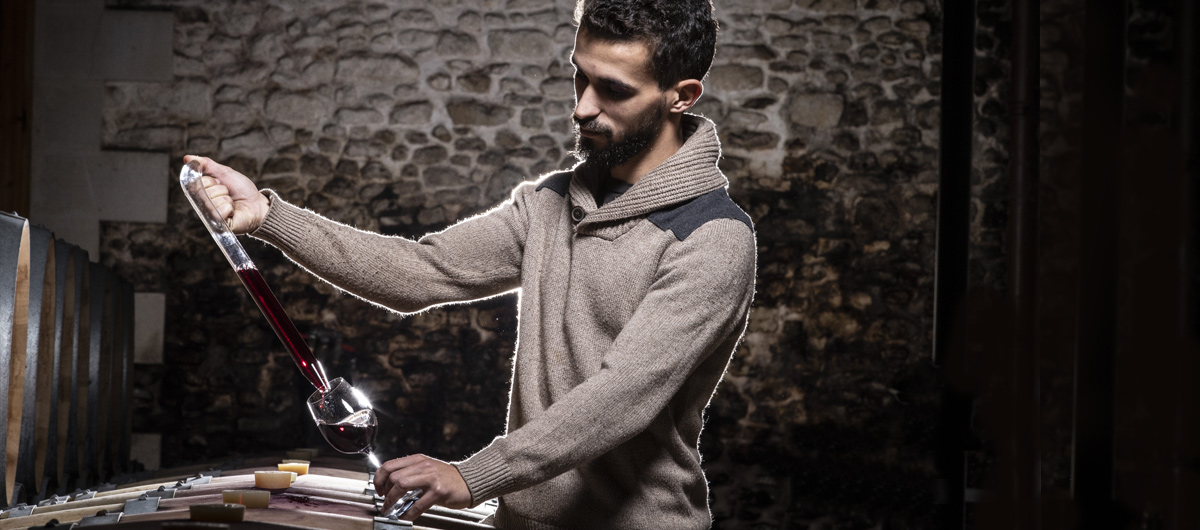
Biston-Brillette means little if we do not relate it to what precedes it. It is in slow motion that we are writing our own story as winegrowers. We are wary of the siren song and walk slowly, like all peasants. This is why we have never pushed the vines too much, on the contrary. This measured sensitivity allows us to approach the current period with a little serenity.
Our concerns revolve around the environment, global warming and inputs, for some even before these topics become passionate. Moreover, if you have to look for landmarks, part of our vines are located near the Natura 2000 zone.
We use an appropriate organic and organomineral fertilization, weed the rows, weed mechanically under foot, replant hedges at the edge of plots, we will not list everything. Sometimes it’s a little too technical to be glamorous!
Let’s say that at each stage, whether in the vineyard or in the cellar, a global reflection is initiated around these major axes and that we are moving in the right directions every year. In a family property, it is impossible to question everything overnight. But let’s say that every year we make improvements at all stages that are going in the right direction.

men & duties
We are the heirs of an ancestral know-how which for ten thousand years has crossed continents and people.

Biston-Brillette means little if we do not relate it to what precedes it. It is in slow motion that we are writing our own story as winegrowers. We are wary of the siren song and walk slowly, like all peasants. This is why we have never pushed the vines too much, on the contrary. This measured sensitivity allows us to approach the current period with a little serenity.
Our concerns revolve around the environment, global warming and inputs, for some even before these topics become passionate. Moreover, if you have to look for landmarks, part of our vines are located near the Natura 2000 zone.
We use an appropriate organic and organomineral fertilization, weed the rows, weed mechanically under foot, replant hedges at the edge of plots, we will not list everything. Sometimes it’s a little too technical to be glamorous!
Let’s say that at each stage, whether in the vineyard or in the cellar, a global reflection is initiated around these major axes and that we are moving in the right directions every year. In a family property, it is impossible to question everything overnight. But let’s say that every year we make improvements at all stages that are going in the right direction.

wine & men
It is futile to ask the vine to give us soulless wines. We strive with each harvest to express the best that it can give us, and that’s already good.

I
t is worth remembering that running a domain like ours is fundamentally artisanal, subject to too many chances for the part of chance to be reduced to the minimum. We deal with these hazards and try to limit their impact. For example, we protect ourselves from late frost episodes, which are becoming more and more frequent, with a water sprinkler system.
Let’s say we reap what we sow and what we have to do with nature. Vigilance is permanent, we are on the bridge every day. Observation and experience guide us to complete each harvest under the best conditions, and it can be complicated at times. As far as possible we harvest at the right time and thanks to our machine, very quickly. We know our plots and have been following them for many years. We have the necessary hindsight to make the necessary decisions, the objective being to maximize the phenolic maturity of the fruits.
The vinification facilities are close to the vines, the harvest arrives very quickly at the vat room. After destemming followed by manual pre-sorting to remove plant debris, the berries pass through the optical sorter which eliminates the less ripe grapes. The harvest is then sent to the vats assigned to plot monitoring.
The modern and functional vat room allows precise vinification, depending on the terroirs, grape varieties and maturity. This step is both technical and at the same time a lot of feeling because no vintage taken as a whole looks like the previous vintage. In the end, you get a wine, ours, that you want to share to cuddle with customers and friends. A classic, cheerful, outgoing wine, not snobbish, which stands up to its illustrious neighbors and remains an excellent ambassador for the estate and the appellation.

wine & men
It is futile to ask the vine to give us soulless wines. We strive with each harvest to express the best that it can give us, and that’s already good.
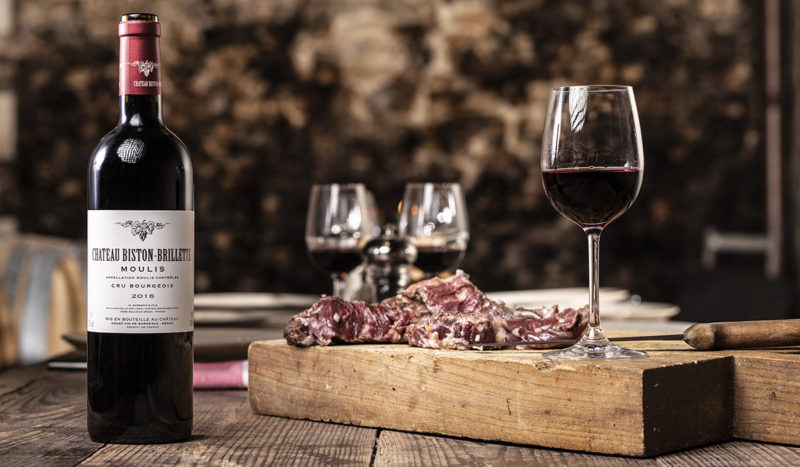
I
t is worth remembering that running a domain like ours is fundamentally artisanal, subject to too many chances for the part of chance to be reduced to the minimum. We deal with these hazards and try to limit their impact. For example, we protect ourselves from late frost episodes, which are becoming more and more frequent, with a water sprinkler system.
Let’s say we reap what we sow and what we have to do with nature. Vigilance is permanent, we are on the bridge every day. Observation and experience guide us to complete each harvest under the best conditions, and it can be complicated at times. As far as possible we harvest at the right time and thanks to our machine, very quickly. We know our plots and have been following them for many years. We have the necessary hindsight to make the necessary decisions, the objective being to maximize the phenolic maturity of the fruits.
The vinification facilities are close to the vines, the harvest arrives very quickly at the vat room. After destemming followed by manual pre-sorting to remove plant debris, the berries pass through the optical sorter which eliminates the less ripe grapes. The harvest is then sent to the vats assigned to plot monitoring.
The modern and functional vat room allows precise vinification, depending on the terroirs, grape varieties and maturity. This step is both technical and at the same time a lot of feeling because no vintage taken as a whole looks like the previous vintage. In the end, you get a wine, ours, that you want to share to cuddle with customers and friends. A classic, cheerful, outgoing wine, not snobbish, which stands up to its illustrious neighbors and remains an excellent ambassador for the estate and the appellation.

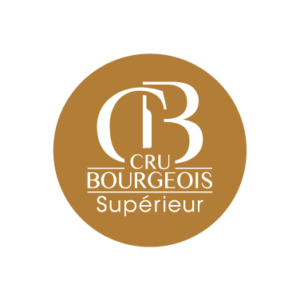
LABEL
CRU BOURGEOIS SUPÉRIEUR
Château Biston-Brillette was classified as Cru Bourgeois Supérieur de Médoc in February 2020. The origin of the Cru Bourgeois label dates back several centuries, it is part of the historic landscape of the Bordeaux vineyards. The classification is pyramidal, made up of three levels of requirement: Cru Bourgeois, Cru Bourgeois Supérieur, Cru Bourgeois Exceptionnel.

CHÂTEAU BISTON-BRILLETTE

A WINE OF CHARACTER
The “signature” of the terroir of Château Biston-Brillette in Moulis is based on the balance between gravel terroirs and clay-limestone terroirs. The finesse and elegance of the wines for the gravel, the strength and the color for the wines from clay-limestone soils, combine to give Château Biston-Brillette its particular typicity.
our wines
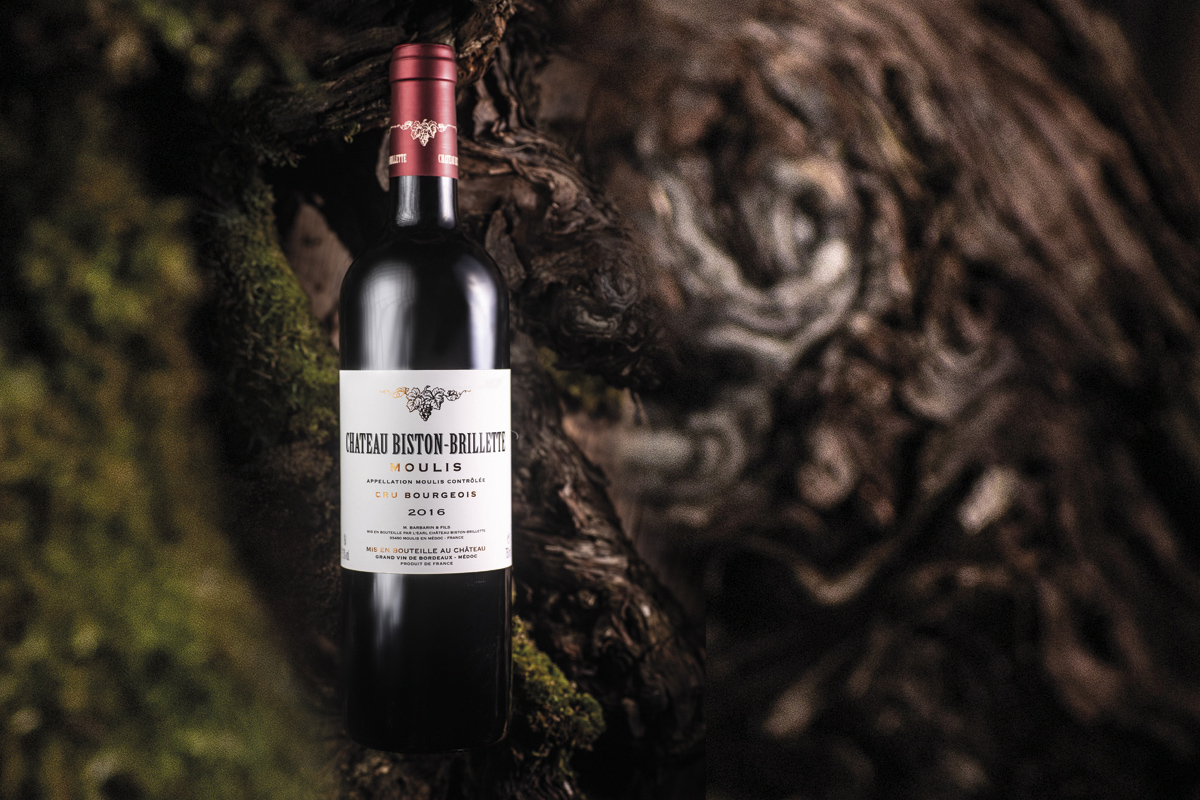
Today the property has 26 hectares of Moulis appellation vines with an average age of 20 years, cultivated on gravelly and clay-limestone terroirs, with a grape variety consisting of 50% Cabernet Sauvignon and 50% Merlot. In recent years, the cellars have continued to acquire modern and functional facilities that allow an increasingly precise expression of the terroir and give Château Biston-Brillette and Château Biston wines a frank, distinguished, modern and complete style.
our family

So starting from a handful of hectares, Christiane and Michel Barbarin will lay the foundations for the development of wine production, supported by their children, Serge and Jean-Paul. When the harvest comes, family and friends meet, especially Juliette and Mathilde, the daughters of Serge and Jean-Paul. Guillaume, son of Jean-Paul, after a BTSA at the Lycée Viticole de Blanquefort joined the team of the two brothers in June 2017. The fourth generation of winegrowers is on the move.
CHÂTEAU BISTON-BRILLETTE

A WINE OF CHARACTER
The “signature” of the terroir of Château Biston-Brillette in Moulis is based on the balance between gravel terroirs and clay-limestone terroirs. The finesse and elegance of the wines for the gravel, the strength and the color for the wines from clay-limestone soils, combine to give Château Biston-Brillette its particular typicity.
our wines

Today the property has 26 hectares of Moulis appellation vines with an average age of 20 years, cultivated on gravelly and clay-limestone terroirs, with a grape variety consisting of 50% Cabernet Sauvignon and 50% Merlot. In recent years, the cellars have continued to acquire modern and functional facilities that allow an increasingly precise expression of the terroir and give Château Biston-Brillette and Château Biston wines a frank, distinguished, modern and complete style.
our family

So starting from a handful of hectares, Christiane and Michel Barbarin will lay the foundations for the development of wine production, supported by their children, Serge and Jean-Paul. When the harvest comes, family and friends meet, especially Juliette and Mathilde, the daughters of Serge and Jean-Paul. Guillaume, son of Jean-Paul, after a BTSA at the Lycée Viticole de Blanquefort joined the team of the two brothers in June 2017. The fourth generation of winegrowers is on the move.



